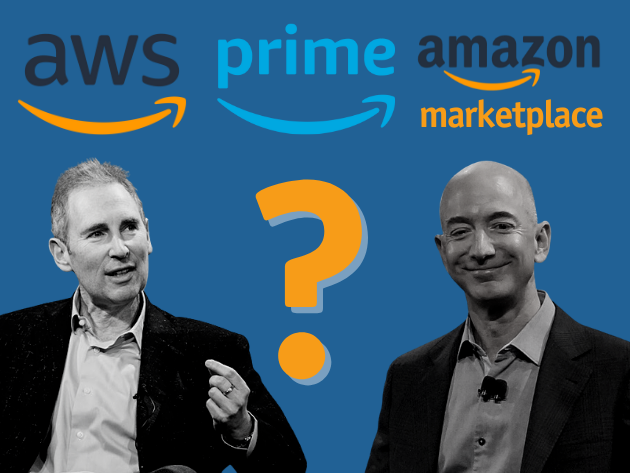
One year ago, the last question put to Amazon founder Jeff Bezos during his final shareholder meeting as the company’s CEO was an important one. It was, in essence: Has Amazon found the fourth pillar of its business?
At the time, Bezos said no. However, he added, there were “a lot of contenders.”
A year later, with Amazon set to hold its annual shareholder meeting Wednesday, it seems appropriate to revisit the question. And some interesting new contenders have emerged in the meantime.
Catching everybody up: This question goes back to Bezos’ 2014 letter to shareholders, where he described four characteristics of what he called a “dreamy” business: “Customers love it, it can grow to very large size, it has strong returns on capital, and it’s durable in time – with the potential to endure for decades.”
In 2014, he wrote, Amazon had three: Marketplace, Prime, and Amazon Web Services.
Fast forward to 2021, and Bezos wasn’t ready to elevate anything else to that status, saying Amazon has a “very high standard” to declare a business a pillar.
“In my opinion, it would be premature to declare anything a fourth or fifth pillar at this time,” he said toward the end of the meeting. “But we do have a lot of contenders. Just to mention a couple: you can think of things like Amazon Alexa and Amazon Studios, and there are many more. You can be sure of one thing: we will be working very hard to turn these things into our next pillars.”
It’s an important question for Amazon shareholders to consider because it speaks to the company’s ability to sustain and grow its overall business for the long run.
Over the past year, in talking with former Amazon execs and others in the industry, I’ve often brought up this question to get their take. My takeaway is that there are still strong contenders, but not a clear fourth pillar.
- Amazon Studios often gets mentioned, particularly given that the company has closed its acquisition of MGM since Bezos named this business a contender. (That $8.5 billion deal had just been announced prior to the annual meeting last year.) But Amazon Studios is so closely tied to Prime, as a perk for subscribers, that it’s tough to check the box for “strong return on capital” on a standalone basis. It feels more like a buttress for an existing pillar.
- Amazon’s advertising business meets the bar for return on capital, generating more than $31 billion in revenue in 2021. We know this because Amazon started breaking out ad results in its financials last year. But do customers love this business? Not really. Many of the third-party retailers who advertise on Amazon see it as a necessary cost of doing business, just to achieve parity in search results, and for that reason some actually despise it.
- So here’s a new contender: shipping and logistics. Yes, this is closely tied to two existing pillars, Marketplace and Prime, but increasingly Amazon has been positioning itself to offer shipping services beyond items on Amazon.com, as evidenced by the “Buy with Prime” program announced by the company last month. Given the billions invested by the company in this area, it only makes sense for Amazon to follow the AWS blueprint, turning its in-house infrastructure into a standalone business in its own right.
Of course, there’s no one more experienced in doing that than Andy Jassy, the former AWS CEO, who will be taking part in his first annual shareholder meeting as Amazon’s CEO on Wednesday morning.
Here’s hoping this question comes up again; it would be illuminating to hear Jassy’s response. Check back for coverage of the meeting on GeekWire tomorrow.


